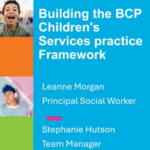
With the latest government statistics reporting an average caseload per child and family social worker of 17.8 nationally, Community Care wanted to see which local authorities were reporting higher or lower than ‘average’ caseloads down across their workforce.
Of the five local authorities with the highest reported average caseload per social worker, three were rated as ‘good’ by Ofsted in their most recent full inspection. Conversely, Darlington, with the fourth lowest average, was rated ‘inadequate’.
Kensington and Chelsea, one of only three councils with a current rating of ‘outstanding’, is second in the government table of lowest averages.
The national average cannot be compared with last year’s reported average of 16 as data this year was collected at individual social worker level, said the report. It advised care in interpreting the figures as “local
authorities have reported difficulties with linking the number of cases and the social worker holding those
cases”.
Across the national workforce, the statistics report that just over half (51%) of full-time equivalent workers are caseholders. However, the report goes on to say that while the proportion of these vary buy local authority, some had difficulty mapping their local roles to those identified in the collection of the data.
See below for the local authorities reporting the highest and lowest average caseholds per worker.
Lowest average caseloads by local authority
| Local authority | Number of caseholders | Average caseload per child and family social worker | Last Ofsted inspection rating |
|---|---|---|---|
| Kingston upon Thames/Richmond upon Thames | 65.1 | 10.2 | Good |
| Kensington and Chelsea | 59.2 | 11.9 | Outstanding |
| Hertfordshire | 240.3 | 12.4 | Good |
| Darlington | 58.4 | 12.5 | Inadequate |
| Sutton | 72.1 | 12.9 | Good |
Highest average caseloads by local authority
| Local authority | Number of caseholders | Average caseload per child and family social worker | Last Ofsted inspection rating |
|---|---|---|---|
| Staffordshire | 199.4 | 26.4 | Good |
| Shropshire | 77.7 | 25.1 | Good |
| Kingston upon Hull | 142.3 | 24.5 | Requires improvement |
| Southampton | 80.5 | 23.9 | Requires improvement |
| Blackburn with Darwen | 59.4 | 23.8 | Good |
Source: Children’s social work workforce 2018



 Bournemouth, Christchurch and Poole
Bournemouth, Christchurch and Poole  Hampshire County Council
Hampshire County Council  Oxfordshire County Council
Oxfordshire County Council  South Gloucestershire Council
South Gloucestershire Council  Wokingham Borough Council
Wokingham Borough Council  Webinar: building a practice framework with the influence of practitioner voice
Webinar: building a practice framework with the influence of practitioner voice  ‘They don’t have to retell their story’: building long-lasting relationships with children and young people
‘They don’t have to retell their story’: building long-lasting relationships with children and young people  Podcast: returning to social work after becoming a first-time parent
Podcast: returning to social work after becoming a first-time parent  How managers are inspiring social workers to progress in their careers
How managers are inspiring social workers to progress in their careers  Workforce Insights – showcasing a selection of the sector’s top recruiters
Workforce Insights – showcasing a selection of the sector’s top recruiters  Unlocking independence: how ASDAN gives care leavers choice and control over their future
Unlocking independence: how ASDAN gives care leavers choice and control over their future 

 Facebook
Facebook X
X LinkedIn
LinkedIn Instagram
Instagram
My caseload has never yet been below 30 in 22 years of social work practice!
The ‘highest’ caseloads seem low to me – I had that many children on my caseload while working part time! Did I miss whether caseload is measured as number of individual children or families?
Tracey you have hit the nail on the head. What are they measuring?
K+C counts their caseload by family rather than children!
At one point when I was frontline I had 64 cases. I don’t want a medal I just want a job to be manageable.
I am surprised by these average figures because I have known caseloads to be as high as 40 at times.
not sure how these figures have been calculated? Not my experience in front line teams like First Response and Safeguarding?
When weighting a case load, there is a lack of clarity as to whether the author is writing about individual children or whole families when quoting the numbers. It is important to know what percentage of cases were CP, subject to the PLO process or if proceedings are to be initiated or have already begun, % of CIN cases etc. It is too simplistic to say well the average caseload across the country is X number of cases, as even a worker who appears to have a very reasonable caseload, may be heavily loaded due to the complexity and sheer extent of paperwork generated by proceedings. Other issues such as the number of kinship assessments to be undertaken, especially if there are multiple family members putting themselves forward or multiple carers due to the number of children needing care. Whether they are some distance away from the LA area and whether children are placed some distance away from the area and/or in separate/multiple placements requiring numerous separate visits also adds hugely to the work. If children are subject to multiple processes, where one process is still ongoing but needs to be ended such as going from CP to LAC Status, this generates huge amounts of bureaucracy and a lot of extra work in front of a computer system that is half-functional most of the time. More than one process leads to multiple reports for Case Conferences and LAC reviews. Other missing information in this article is knowing how many extra hours SWs are putting in to the job, which may account for some of the ‘Good’ or ‘Outstanding’ Ofsted ratings and does not take into account the amount of unpaid overtime and burnout. This article conveniently skips much essential detail
Those figures don’t reflect my experiences, or that of colleagues in other areas. Case loads are much higher that the highest quoted across the board
Good point Tracey!
But whether it’s children or families, the numbers are still high in certain areas, added to that having ASYE’S (who have reduced and protected caseloads), sickness, training, and other meetings etc its not always manageable. No one really listens so the only way is to work as long as you can and then hopefully get out and do something else.
Very demoralising to be honest.
The “Reduced and Protected Caseloads” for ASYE’s are a total myth. I’m an ASYE and have regularly had over 30 children allocated to me in a front line Children’s Assessment and Safeguarding Team.
I agree. Protected and reduced caseloads? What is that? I am ASYE and have a large caseload with little supervision (although I request it regualarly via email) but am told that I manage my caseload well and meet deadlines. What with the demands of work and completing ASYE work, I feel close to burn out already.
please can we stop using the term ‘caseload’ and perhaps say number of children/families working with? cases – really – is that what the people we work with are? #peoplenotcases
Don’t forget that this is an average, so there will be people with less (ASYE and students) and then of course those with more. That’s how an average works.
I have just completed my ASYE, I never had a protected caseload, I usually had 28 and nearly all CP. such a caseload when trying to do ASYE work alongside this meant I struggled and have just handed my notice in.
I have known many colleagues with 37 cases or thereabouts
I have been in social work for 30 years and have always had a caseload far in excess of the numbers quoted. If only!!!!
What a load of tosh!!! None has such low caseloads who are they trying to kid!